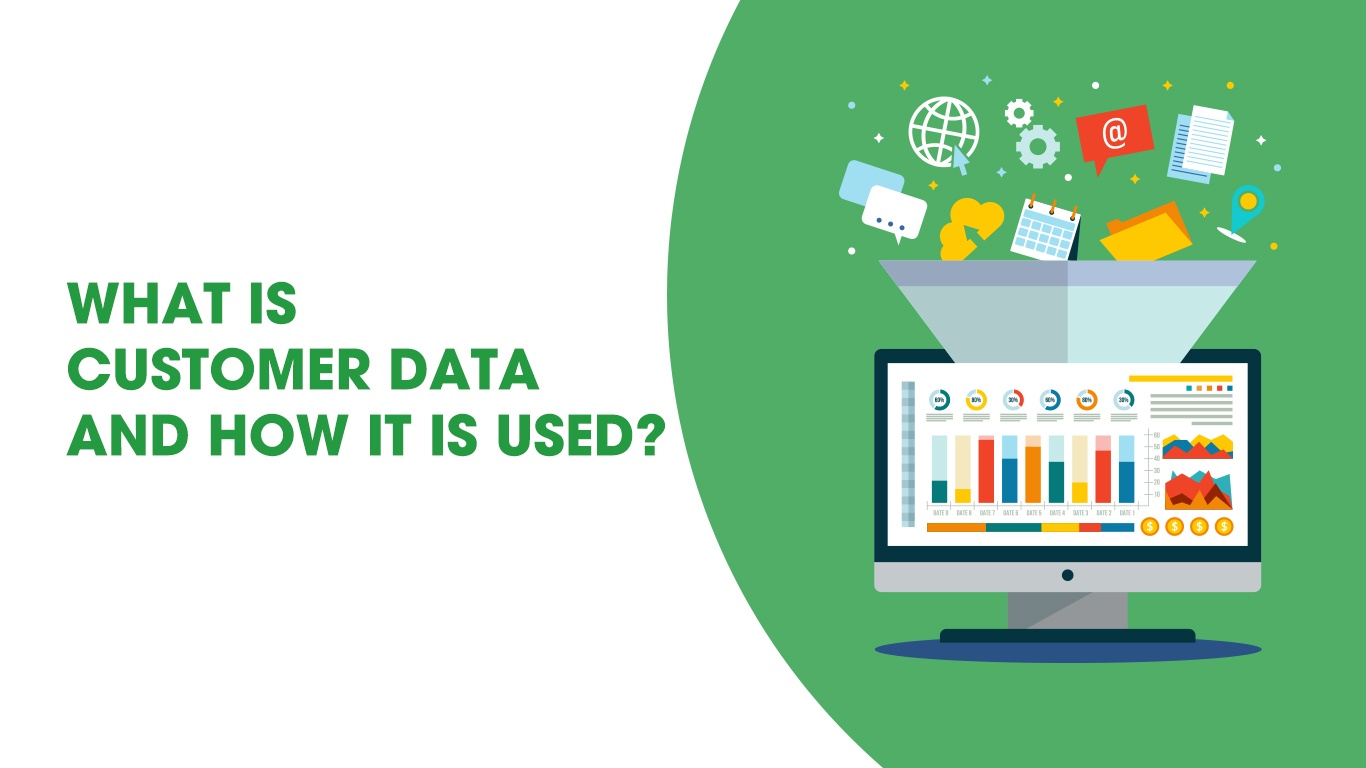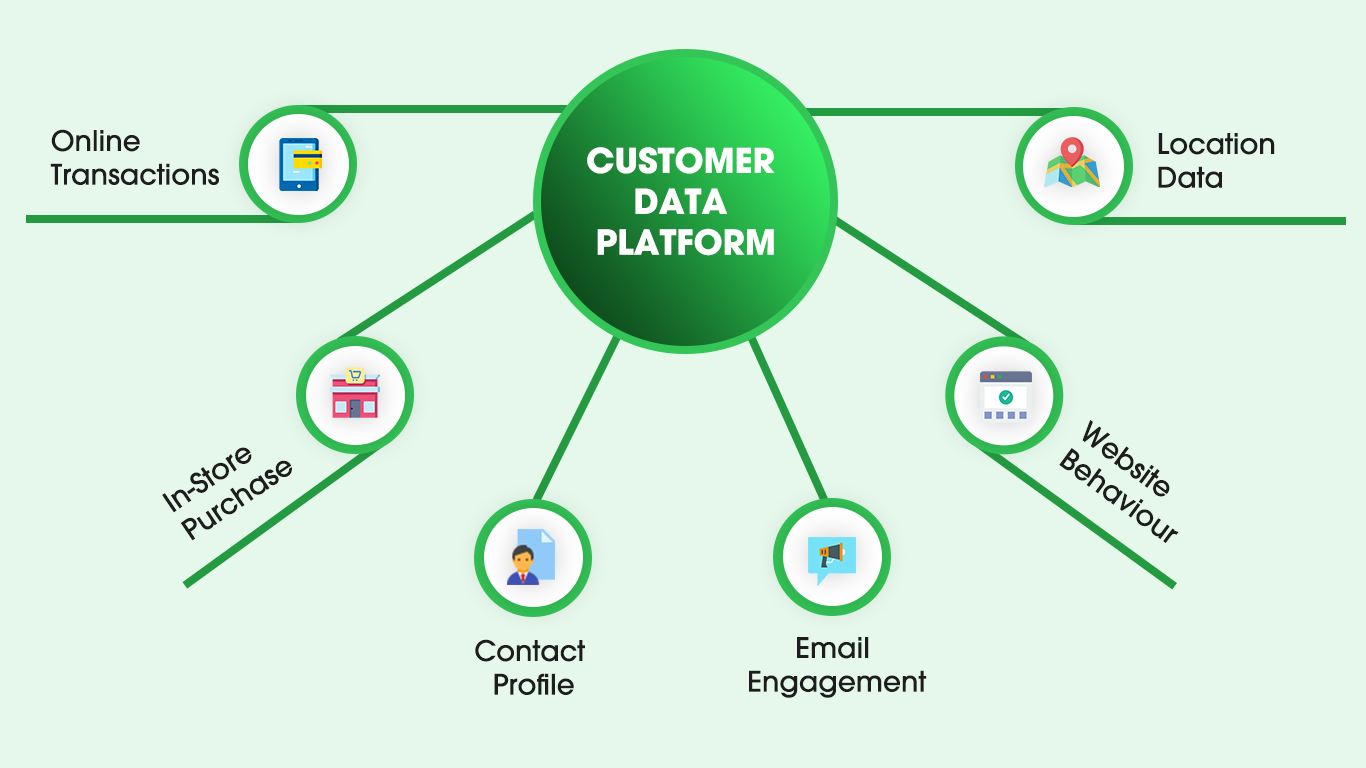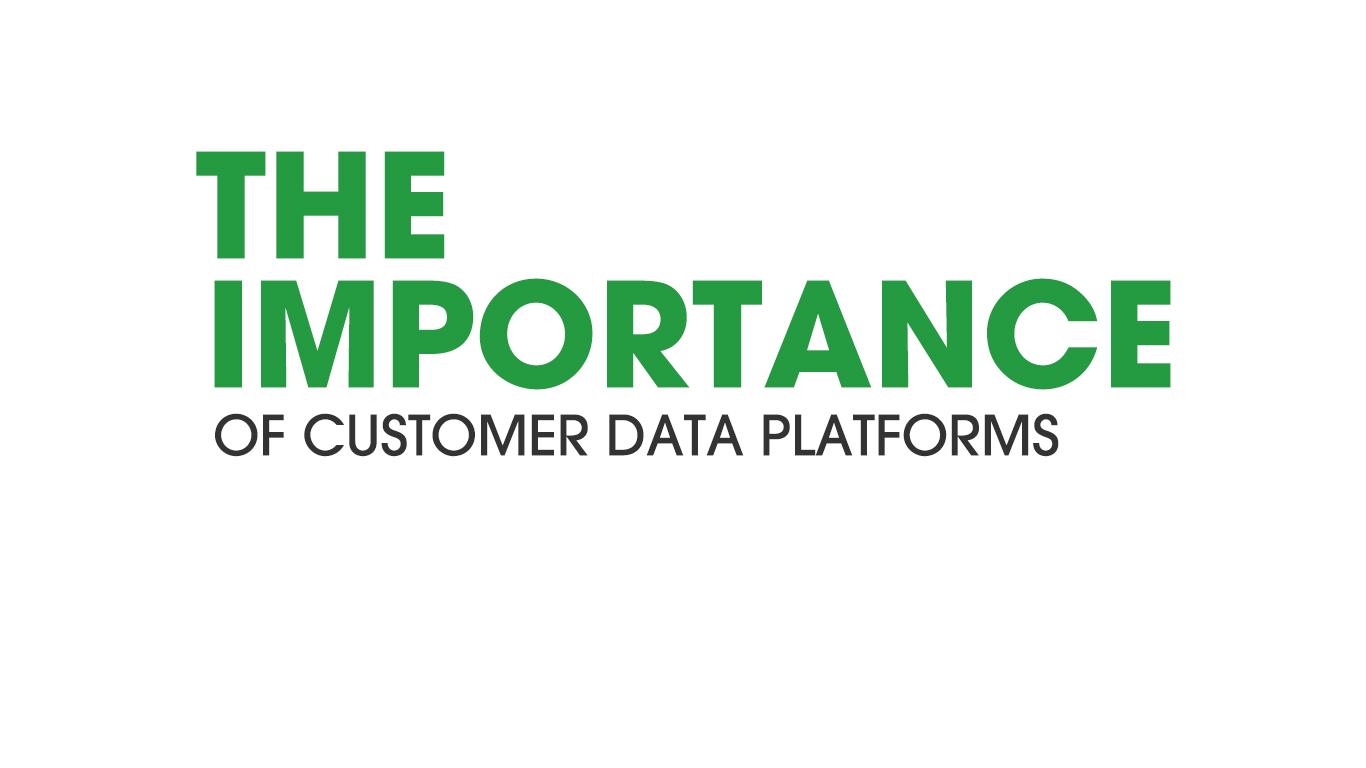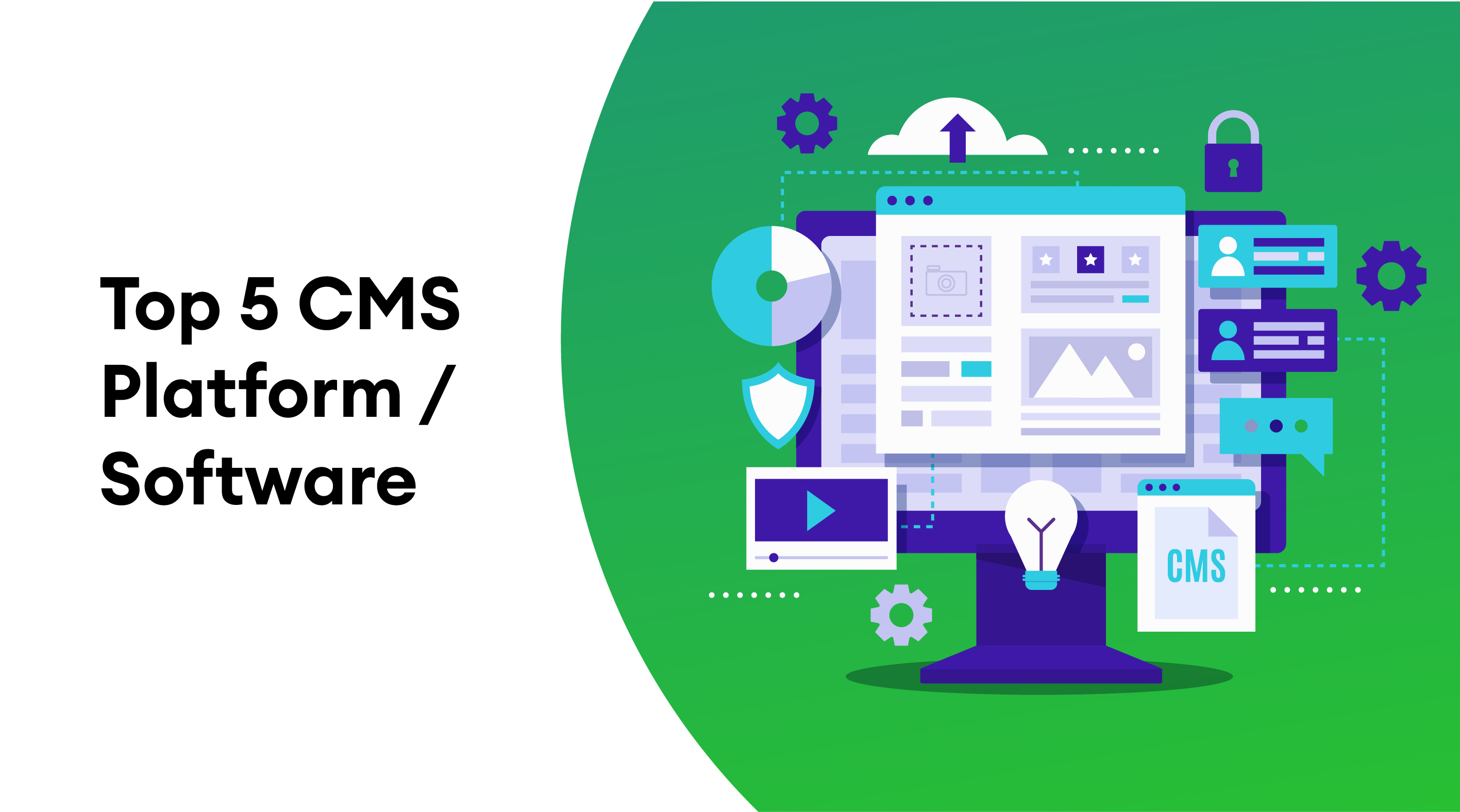Ever thought what corporates do with all the customer data they collect and why they collect it at all? Well, for marketing their products, services, and brand, of course! Now, the next question that arises in your mind, as a marketer or any professional, really, is how corporates manage this vast ocean of data that they have collected for years together? Every corporate enterprise makes use of various software systems that have specific functions and store data of either certain types or from certain departments of a particular corporate.
The collection of data is beneficial to corporates, the more, the merrier a corporate is. However, the problem arises when these individual software systems cannot combine and provide a better data source to the corporate. Since each system stores individualistic data, the resulting data, when combined, is of much greater value to the corporate. customer data platform (CDP)s source data from each software system that corporates make use of, match customer identities from each source, unify the data, and also sometimes rid the database of duplicate or spam entries.
To simplify this, take an example where a corporate has multiple software systems, recording data from multiple departments. One software system stores basic customer data that includes names, contact numbers, addresses, etc. Another system of the corporate stores customer data such as purchase history, in-store/ offline activity, and returns, among other data. Now, every department of a corporate can access this combined data that has more information about each customer, thereby enabling customer-centric product/ service targeting and, ultimately, a higher sale probability.[emaillocker]
Although there is no prescribed industrywide definition for a customer data platform (CDP), Straits Research defines it as a platform that “collects, unifies, and creates a customer profile that can be activated on various platforms and media networks by marketing companies for the purpose of advertising.” It centralizes customer data from multiple sources and creates a 360-degree view of each customer’s profile.

Now that the concept of a customer data platform (CDP) is clear, it’s obvious that the most valuable asset for any corporate would be data. Customer data to be specific. Corporates can only sell their products/ services as long as they know what their customers require, which is made possible by the collection of customer preferences and interests. Each interaction with a customer adds information to the customer’s data profile, and this data imparts meaning to each interaction.
Types of Customer Data:
There are four types of customer data that customer data platforms (CDPs) collect and sort. These are as follows:
-
Identity Data:
In customer data platforms (CDPs), the base of a customer profile is made up of identity data, which enables the identification of each customer in a unique manner and prevents duplicate entries. It typically includes the name, demographic, location, contact, social, professional, and account information of each customer.
-
Descriptive Data:
An expansion of the identity data that provides companies with a more detailed picture of the customer is known as descriptive data. As the name suggests, it describes further the identity data. Descriptive data includes information regarding a customer’s career, lifestyle, family, and hobby information.
-
Quantitative or Behavioral Data:
Behavioral data provides marketers with an understanding of how a customer has engaged with the company through their actions, reactions, and transactions. Quantitative data includes information regarding transactions, email communications, online activities, and customer service interactions.
-
Qualitative Data:
The context of each customer profile is given by qualitative data. It is collected through the motives, opinions, and attitudes that a customer expresses. This data may or may not be related to the company.

According to a poll survey by Harvard Business Review that asked about what the responder’s organization focused upon to reach market goals, the majority of the responder’s stated that investment in customer data and the analysis of that data were of crucial importance.
To simplify the need for data collection, let’s dive into a few situations where data saves the day.
- In the first case, customers receive a discount code for an item they recently purchased. Here, one can only imagine the frustration that the customer experiences.
The Data-Based Solution: Here, it may be unintentional for the company to send the discount email right after the purchase was made. Therefore, segmented campaigns are advised while sending out discount codes, where the segmentation takes into account the purchase history of each customer.
- Next, the tons of emails that customers receive, most of which are irrelevant. The customer did not sign up to receive each and every email from the company. The chances of customers unsubscribing at this point are huge.
The Data-Based Solution: Although these mails could possibly interest the customer, the certainty is that not all will. To come around this problem, customer interests need to be predicted, and the frequency of emails needs to be optimized. The prediction can only be made through previously collected customer data.
- Another situation is where customers are repeatedly asked for information that they have already provided. This generally occurs in companies that operate with individual software systems and is a put-off for customers.
The Data-Based Solution: Instead of maintaining data simply as a record of customers, companies need to put their data to efficient use. There is a desperate need for customer identity management and, more importantly, the availability of an omnichannel platform that is accessible to every department of a company.
Customer data collection is a complete business area on its own. Each company utilizes data in its own manner, from which, initially, it looks to improve customer experience, then refine its marketing strategy, turn data into cash flow, and, in some cases, use data to secure more personal data. In today’s world, customer loyalty is scarce, as there are tons of options that customers can choose from. The brands that will lead their industry are the ones that base their marketing and business approach around their customers. A customer-centric brand that provides excellent customer experience and simultaneously drives value for their business will result in a successful customer loyalty program.

Technology is readily available, and many marketers do not see the logic behind installing and implementing yet another tool for data handling. To such marketers, a customer data platform (CDP) seems like an added expenditure that does the same work like most other data tools and not much more. A few good reasons for the implementation of a customer data platform (CDP) are as follows:
-
Marketing Technology Fragmentation
With an increase in the number of data tools used by a single company, and each tool serving a different purpose, there is bound to be a communication gap between the tools. In such cases, a customer data platform (CDP) acts as a single point of integration for all tools.
-
Data-Driven Marketing
Marketing, nowadays, has developed into a well-researched science that requires the study of consumer behavior and preferences, which contrasts earlier methods of customers purchasing or interacting with companies through a single source. The advent of marketing technologies necessitates brands to get to know their customers better across various channels and implement omnichannel campaigns.
-
Real-Time Personalization
Customer data platforms (CDPs) enable customization for each customer by offering a great degree of content personalization. They also let marketers make personalization changes for a better customer experience in real-time, along with the ability to segment and target the correct audience based on their preferences.
Why Businesses Choose CDPs Over CRMs
Most marketers consider CRMs to be the same as customer data platforms (CDPs), whereas some may say that CDPs are just a more enhanced and advanced take on a CRM. While CRMs are utilized for customer engagement, their scope is limited to certain first-party information that is recorded through direct interaction with customers. CRMs are one of the most commonly used data tools as they provide persistent customer history capturing. However, they only capture limited amounts of data from direct customer interactions and transactions and are not normally managed by marketers.
When compared with CRMs, customer data platforms (CDPs) function similarly, in terms of storing data from first-party sources, which include the company website, offline sources, transactions, and other behavioral data. Coming to CDPs, they have unique characteristics that include data storing from CRMs, and sourcing of data from third-party platforms, which creates a 360-degree profile of customers. In addition to these features, CDPs are owned by marketers, and function as real-time tools that enable marketers to make changes instantly, as and when required. Another plus point of using CDPs is that since they store past data, they allow the creation of flexible lists that marketers can use for specific audience targeting.
To sum it up, the key difference between a CRM and a CDP, despite both being used for the collection of customer data, is the ability of CDPs to unify data to form a 360-degree customer profile from multiple online, as well as, offline sources. Therefore, CDPs are more than a simple enhancement of CRMs and actually add to the overall functionality of a CRM and other such data tools that a company makes use of. While CRMs provide a simple view of a portion of a customer’s profile, CDPs provide a more comprehensive and persistent customer profile.
Benefits of Implementing CDPs
CDPs offer multiple benefits to marketers and their businesses. A customer data platform is preferred over other data tools for the following reasons:
-
One Place Access
When devising a marketing strategy, on the basis of personalization, there is a large amount of data that is available to marketers. The only question that arises is which data must be utilized so as to garner maximum customer response? Marketers are left wondering whether they should make use of just first-party, second-party, or third-party data. The answer to this is simple; all types of data! The more information a marketer possesses about a specific customer, the greater is the possibility of personalization. The combination of these data sets is made possible through the adoption of a customer data platform (CDP), which provides a 360-degree customer profile.
-
Time Saver
Collecting stored data from each marketing and customer service channel is a time-consuming process and is, quite frankly, not something a marketer would do every time a campaign needs to be built. A customer data platform (CDP) does away with the need to collect data individually from all the channels and saves precious time. It integrates with the CRM, other marketing channels, and data tools, therefore efficiently unifying the data that is accessible to marketers instantly. It also enables marketers to view each single customer profile and creates a dynamic segmentation.
-
Works Magic on Big Data
Large data sets can be tricky to work with, and an Excel spreadsheet simply cannot handle the load that big data generally possesses. Spreadsheets handle smaller datasets extremely well, but will not be able to even process basic filtering when subject to big data. The key limitation of Excel sheets is that the company’s data will always be represented in portions, and dynamic updates will not be possible when the engagement changes. CDPs are extremely useful in such situations and enable efficient handling, filtering, and updating of big data.
-
Fail-Proofing
CDPs allow marketers to personalize content to a great degree, which is beneficial when targeted marketing is made use of. However, if the marketer gets a few details that are incorrect, and the advertisement does not relate to the preferences of the target audience, it could result in customer irritability, and some customers may even unsubscribe. To clear this obstacle, CDPs provide marketers with the ability to view past purchases and the behavior of customers. Here, despite emails and interactions between customers being automated, the customer data platform (CDP) keeps track of every minute detail, which results in customer satisfaction.
-
Jots Detailed Customer Info
CDPs track every detail of a customer from every available data source. The 360-degree profile of customers allows marketers to map every step of a customer’s journey, purchases, and transactions. A customer data platform (CDP) is especially helpful in cases where there is a multitude of data sources. The process of extracting data from multiple sources, combining it on one platform, and the removal of duplicate entries is tedious and is only possible through a CDP. A customer data platform (CDP) matches customer identity from different sources, combines the data with the real-time website and in-house data, and provides an accurate report of customers in a single place.

-
Allows Audience Analysis
A marketer who uses a customer data platform (CDP) is provided with an instant report that comprises consolidated multi-channel data, which enables the analysis of customer behavior and gives valuable insight into the company’s audience.
-
- Audiences can be analyzed on the basis of the following parameters:
- Who are the most loyal customers?
- Which products are the most popular?
- Which customers haven’t made a recent purchase?
- Which customers are approaching their subscription end?
The analysis can then be used to further segment the customer base and create new audiences. Marketers can then choose the segment they want to market their products to.
-
Revenue Rockets
The effective automation of customer journey from a customer data platform (CDP) allows marketers to increase customer engagement and, in turn, improves customer experience and conversions. The extra bit of optimization that CDPs allow marketers to make, in terms of personalization, connects customers to the brand, builds loyalty, and increase customer lifetime value. The bigger picture of this demonstrates greater returns on the initial investments made by a company, along with a marketing operation that continues to add to company profit.
-
Enhanced Reporting
CDPs make the measuring and reporting processes easier as cross-channel data is in one place, which, in turn, makes KPI calculation simpler. Marketers do not have to spend as much time on calculation as they do with platforms other than CDPs while creating reports. Marketers can now utilize this excessive time to analyze data reports, thus allowing the identification of areas of improvement by following a continuous improvement approach.
-
Optimization of Campaign
CDPs provide marketers with valuable insights into the performance of marketing campaigns. With the help of CDPs, marketers can gauge the efficiency of an ongoing campaign and make the necessary changes to it in order to improve the product or service promotion attempts. A customer data platform (CDP) does not only provide marketers with insights for solving immediate matters, but also provides data that can be useful in the long run. Each time a company launches a campaign, it learns something new. These learnings can be studied, and the advertising campaign can be improved for future use.
Takeaway
With each technological advancement, databases have siloed, and customer data platforms (CDPs) are just what marketers needed to obtain unified, precise data. Instead of structuring themselves around a department, device, or channel, CDPs are structured around customers. A customer data platform (CDP) enables access, analysis, and action on each detail that a company knows about a customer, which allows the marketing of this data through content that is more personalized, nuanced, and effective.
I will be writing more about CDPs, their challenges, implementation, choosing the right one, and more in my next article. Stay tuned![/emaillocker]






